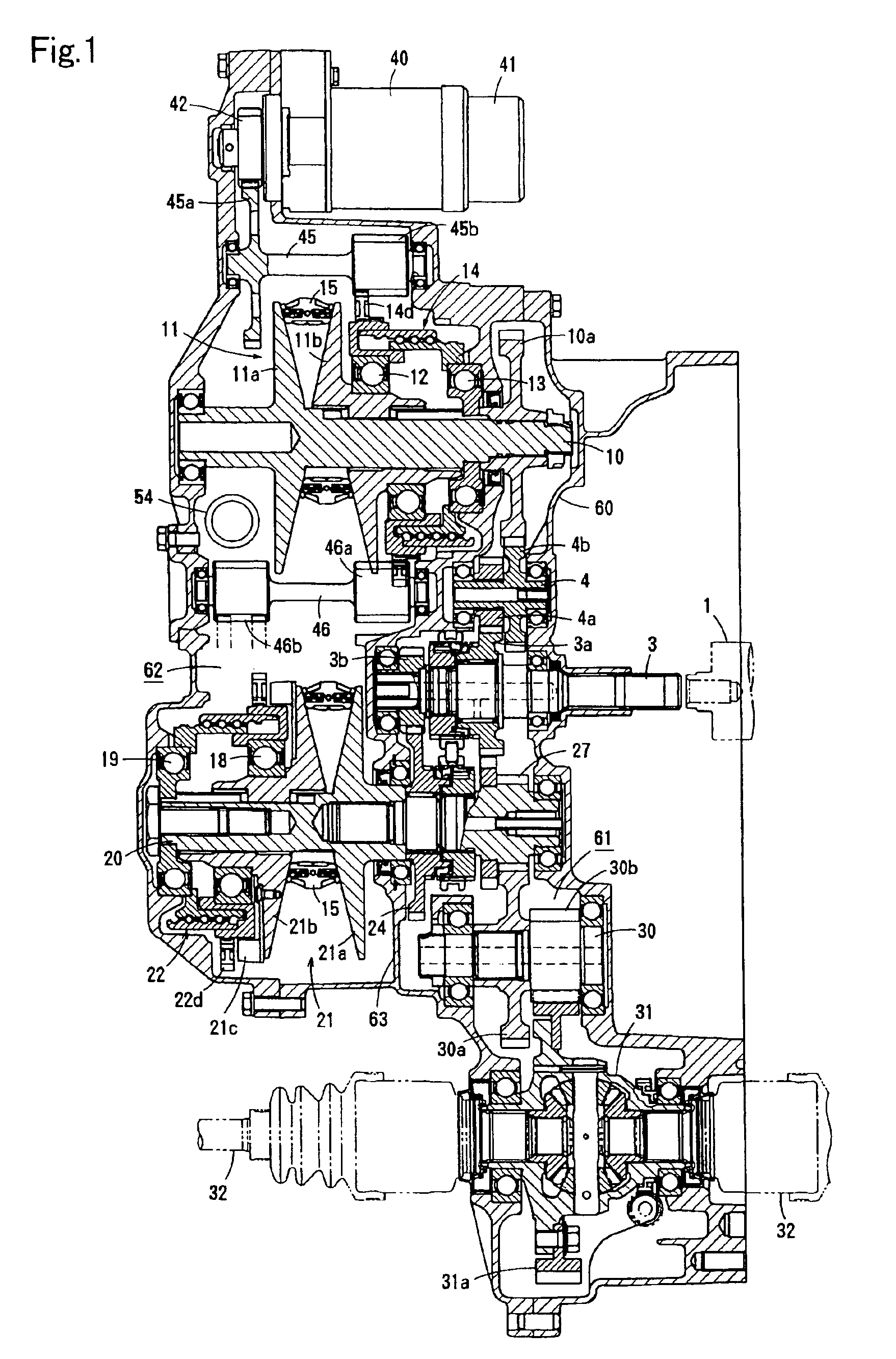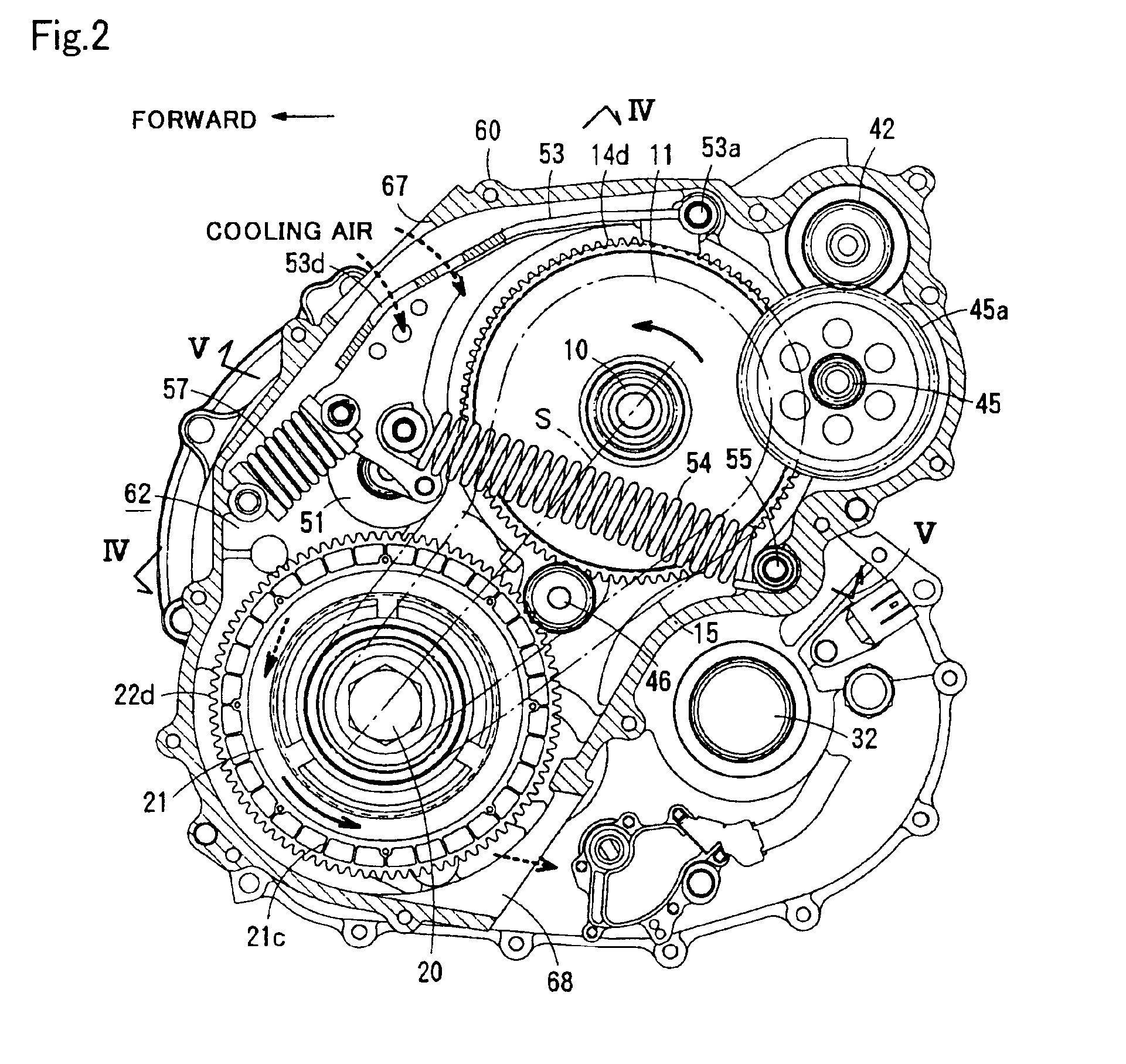Continuously variable transmission
a transmission and variable technology, applied in the direction of gearing, cycle equipment, hoisting equipment, etc., can solve the problems of reducing durability, reducing the distance between the axes of driving and driving pulleys, and requiring a larger rotational force for operating the stroke mechanism, so as to shorten the distance, shorten the distance, and reduce the size of the transmission
- Summary
- Abstract
- Description
- Claims
- Application Information
AI Technical Summary
Benefits of technology
Problems solved by technology
Method used
Image
Examples
Embodiment Construction
[0039]FIGS. 1 to 7 show a specific structure of a continuously variable transmission according to a first embodiment of the present invention, and FIG. 8 shows the skeleton structure thereof.
[0040]This continuously variable transmission, which is employed in a vehicle having a transversely mounted FF (front engine-front drive) system, generally comprises an input shaft 3 driven by an engine output shaft 1 via a starting clutch 2, a countershaft 4, a driving shaft 10 supporting a driving pulley 11, a driven shaft 20 supporting a driven pulley 21, a dry-type endless V belt 15 running around the driving pulley 11 and the driven pulley 21, a reduction shaft 30, output shafts 32 coupled with wheels, a ratio-changing motor 40, a tension-adjusting device (tensioner) 50 and the like. The input shaft 3, the countershaft 4, the driving shaft 10, the driven shaft 20, the reduction shaft 30 and the output shafts 32 are arranged non-coaxially and in parallel with each other.
[0041]Though the star...
PUM
 Login to View More
Login to View More Abstract
Description
Claims
Application Information
 Login to View More
Login to View More - R&D
- Intellectual Property
- Life Sciences
- Materials
- Tech Scout
- Unparalleled Data Quality
- Higher Quality Content
- 60% Fewer Hallucinations
Browse by: Latest US Patents, China's latest patents, Technical Efficacy Thesaurus, Application Domain, Technology Topic, Popular Technical Reports.
© 2025 PatSnap. All rights reserved.Legal|Privacy policy|Modern Slavery Act Transparency Statement|Sitemap|About US| Contact US: help@patsnap.com



